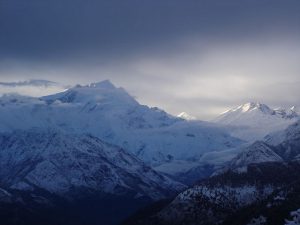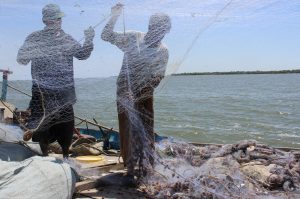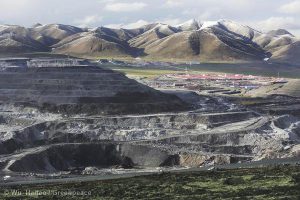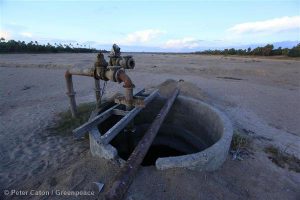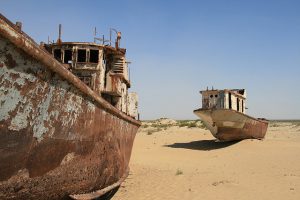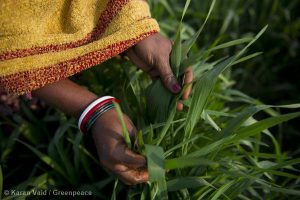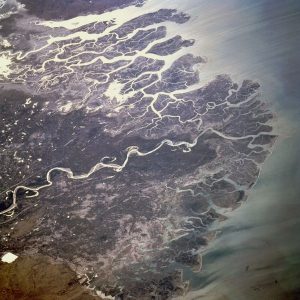Could the floods have been averted? Did the people of India’s Jammu and Kashmir state pay for the government’s apathy in overlooking basic environmental safeguards and not reacting on time? A disaster was clearly in the making but where was the preparation for it?
It’s been a month since floods in the Himalayan state killed more than 280 people, left many thousands homeless and damaged property worth INR 1 trillion (USD 16 billion).
With questions growing over governmental apathy, environmental negligence and flaws in reading the warning signs, officials say they are still clueless about the why and how of the worst floods in Kashmir valley’s recorded history.
“We are still unable to analyse what happened on September 7 (when floodwaters inundated large parts of the valley and Srinagar),” Pawan Kotwal, the state’s commissioner for flood control, admitted at a recent press conference in the summer capital Srinagar.
His department, Kotwal said, would study satellite images and request New Delhi’s assistance in analysing the disaster.
Officials have no answer for the misinterpretation — or no interpretation — of the data available with the meteorological department.
Warning signs
“There was record 400 millimetres precipitation in just four days which meant a huge disaster was in the making considering Kashmir’s topography, the limited carrying capacity of the Jhelum river and its spill-over channel. There was also Kashmir’s proneness to flood disasters to consider. I am surprised why it did not serve as a warning,” said Shakeel Rumshoo, head of Kashmir University’s earth sciences department.
Flood control department officials had warned that the discharge in the Jhelum had created new records and the river was flowing more than 14 feet above the danger mark at Sangam in south Kashmir.
Analysts are asking why officials did not send out clear flood warnings.
“It was not a flash flood where you have no breathing time; this was a disaster which was slowly building up. But the officials failed to give clear warnings based on the available data,” said Professor Bashir Ahmad, who teaches Geography at Sripratap College in Srinagar.
Disaster preparedness
For the central government in New Delhi, a series of disasters in recent years should have thrown up some important lessons. That is why it is being blamed for not doing enough for effective disaster preparedness and improving disaster management despite having everything down on paper.
A top official of the National Disaster Management Authority (NDMA) told the thirdpole.net on condition of anonymity that only 10% of what is written on official documents or discussed at meetings is implemented.
The result is faulty execution of disaster management operations and ill-preparedness for floods, not just in Jammu and Kashmir but also in the northeastern state of Meghalaya.
India’s junior home minister Kiren Rijiju said on September 29 that the way the two state governments managed the September disasters was “not up to the mark”.
He stressed that India would have to play a bigger role in disaster management, at least in South Asia. But for that to happen, an effective mechanism needed to be in place in all parts of the country.
According to a paper by researchers at the Indian Institute of Technology (IIT) in Kanpur, India has been traditionally vulnerable to natural disaster due to unique geo-climate conditions. Floods, droughts, cyclones, earthquakes and landslides have been recurrent phenomena. About 60% of the landmass is prone to earthquakes of various intensities and over 40 million hectares of land is prone to floods. The paper lists a number of weaknesses and problem areas.
Several states in India don’t have their own disaster management authorities and the subject continues to be the ‘additional charge’ of principal secretaries in the revenue departments. “What can they do for disaster management when they already have enough responsibilities to handle from their own departments,” the NDMA official asked.
Lack of coordination
Lack of coordination and cooperation between the states and the centre is another problem. Discussing the recent floods, the official said that since 2011 the Jammu and Kashmir government had not responded to NDMA’s repeated requests for space for a National Disaster Response Force (NDRF) team in Kashmir.
The preparedness of Jammu and Kashmir’s own disaster response force was exposed when officials went missing for days after the Jhelum waters submerged large parts of Srinagar and the valley. Asked why it took his troopers more than a week to begin the task of rescue and relief, State Disaster Response Force (SDRF) superintendent Mehraj Shah told thethirdpole.net, “What could we do with empty hands? We didn’t have the required wherewithal like boats or safety jackets for rescue operations.”
According to him, SDRF was given INR 90 million (USD 1.5 million) only after the disaster. Since it was set up in 2012, the SDRF had not been provided with basic tools like boats, jackets and landslide clearance JCB machines.
Flood control programme
The state government led by Omar Abdullah has been playing the classic blame game. It has said that the Central Water Commission (CWC) had rejected a “well thought out plan” for flood control in Kashmir for lack of minor details. It has also said that the September 7 deluge could have been averted had its INR 2.2 billion (USD 350 million) flood control programme in 2010 been accepted by New Delhi.
According to Mir Javid Jaffer, Kashmir’s chief engineer for flood control, the project was aimed at raising the carrying capacity of the Jhelum and the spill-over flood channel from the current 50,000 cusecs to 120,000 cusecs. It also included the dredging of outfall channels downstream.
But the proposal was short on technical details. “We had no objection to what the Jammu and Kashmir government was saying. But they only submitted a tentative project based on mere assumptions and failed to support their project with technical details,” Chander Pal Singh, chief engineer at the Central Water Commission, told The Third Pole from New Delhi.
“If its flood control department did not have the required human resource to support the project with technical details, it could have outsourced the project documentation to some agency,” he said. This, Singh added, would have cost about USD 8,000.
“We waited for months for these details which they failed to provide.” Singh said that CWC is still ready to support them.
Massive encroachments
Over the last three decades, water bodies in Srinagar city, including the Jhelum and its spill-over channels, have been encroached upon with construction.
Many of the areas submerged are actually extensions of wetlands which had served as water sinks during the huge flooding of Srinagar city in 1902.
As people watched with dread the waters come into the city, old-timers recalled days when they would fish in areas that are now posh residential neighbourhoods. “People used to throng this area for fishing when I was a young boy,” Muzaffar Mir, an elderly man said about Bemina, a sprawling residential area in Srinagar which was once a wetland.
“Unless the flood basins which stand encroached upon, are restored to cater to the surplus flow besides taking some other measures, the city of Srinagar will continue to be under the threat during major floods,” said Syed Madni, a former official in the water resources department.
![<p>An Indian Air Force helicopter evacuates victims of the 2014 floods in Jammu and Kashmir [Image by: Pacific Press Media Production Corp./Alamy]</p>](https://dialogue.earth/content/uploads/2014/09/Kashmir-floods-2014-scaled.jpg)

